Despite the blistering heat of summer, I always found peace and solace going around churches and praying to God during Holy Week. In addition, one gets an exceptional time to appreciate the various places and structures that you visit along the way. More satisfying is when my whole family comes along for that short but special spiritual journey.
This year, even without a family vehicle, we were able to do just that.
We decided to go on a Visita Iglesia, last April 9, this liturgical year’s Maundy Thursday when we commemorate how Jesus instituted the Holy Eucharist during the famous Last Supper and washed the feet of His disciples to denote the service and love Christians had to give to one another.
Many Filipinos often prayed the Way of the Cross during Holy Thursday and so many churches are expectedly filled with similar pilgrims. Incidentally, April 9 also marks the National Day of Valor (Araw ng Kagitingan) in memory of those heroic soldiers who died defending the country during the Second World War.
 The family that prays together, journeys together
The family that prays together, journeys togetherOur spiritual trek began at the Church of the Holy Sacrifice inside the University of the Philippines’ Diliman campus. Built in the 1950’s, the church is an example of contemporary architecture of its era as the first circular chapel and first thin-shell dome in the country. Declared a national treasure by the National Historical Institute (NHI), its architecture was designed by Leandro V. Locsin while national artists like Vicente S. Manansala (with the assistance of Ang Kiukok) painted its famous Stations of the Cross murals and Napoleon V. Abueva sculpting the altar and massive crucifix.
 A variety of colorful fresh fruits and other foodstuff adorn one UP sidewalk
A variety of colorful fresh fruits and other foodstuff adorn one UP sidewalkHearing Mass or simply visiting the Church of the Holy Sacrifice is such a wonderful family experience. On many occasions, we would come here to UP on weekends, visit the church, have lunch at the UP Coop, have a stroll and let the kids play at the university’s football field. I also have many fond memories about this campus since my grad school days during the late 1980’s. At the end of almost every one of those fond memories is a good serving of UP street food! My personal favorite - what else but good old fish balls washed down by good old Coke Light or ice cold buko juice (hopefully without the formalin!).
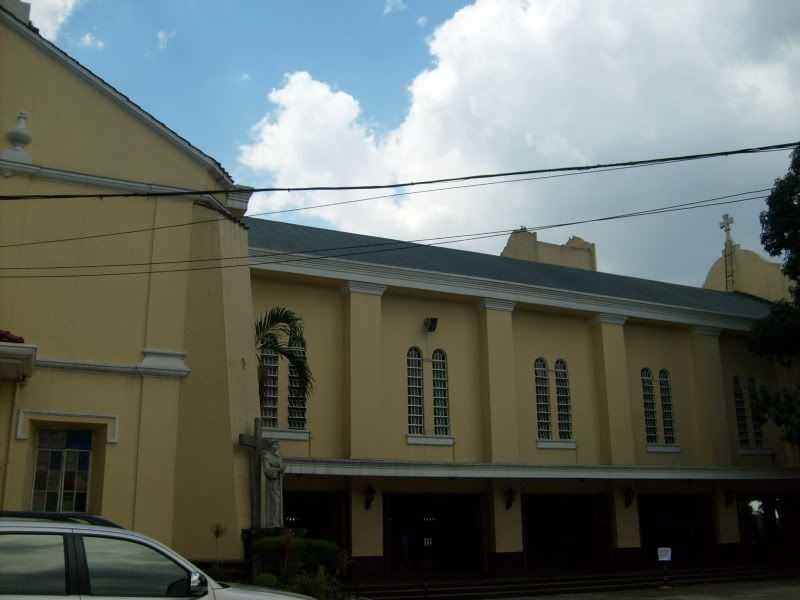
The parish church of my early youth, our next stop is the San Pedro Bautista Parish Church. About 420 years ago, the site was donated to the Franciscans (OFM - Order of Friars Minor) by colonial governor general Santiago de Vera in the name of the Spanish King Philip II. From a humble structure made of thatch and bamboo, it originally opened as a house of retreat and novitiate. Later a chapel was built and rebuilt several times. In 1699, a church made of stone was constructed and the convent was restructured. Under the title Nuestra Seňora De Montecelli (Our Lady of Montecelli), though it was more popularly known from its very beginnings as San Francisco del Monte.
I was baptized in this church our family being parishioners in this area. I often heard Mass in San Pedro Bautista, active in a local Legion of Mary Praesidium and the Block Rosary movement. Eric, one of my brothers served as an altar boy in this parish. On several occasions, we would have group activities at the nearby parish social hall. The parish priest was a Spaniard then, Fr. Diez who spoke Tagalog quite well as I remember from his homilies. Nowadays, most parish pastors are native-born priests.
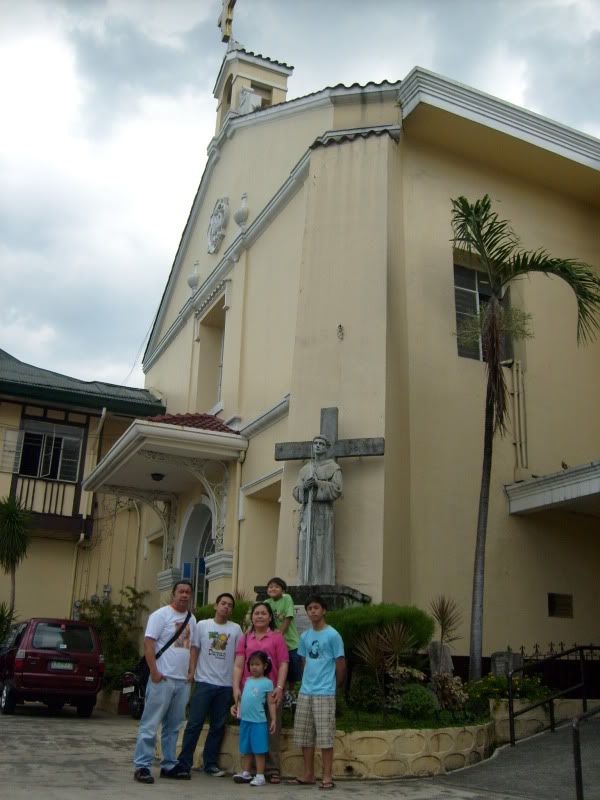
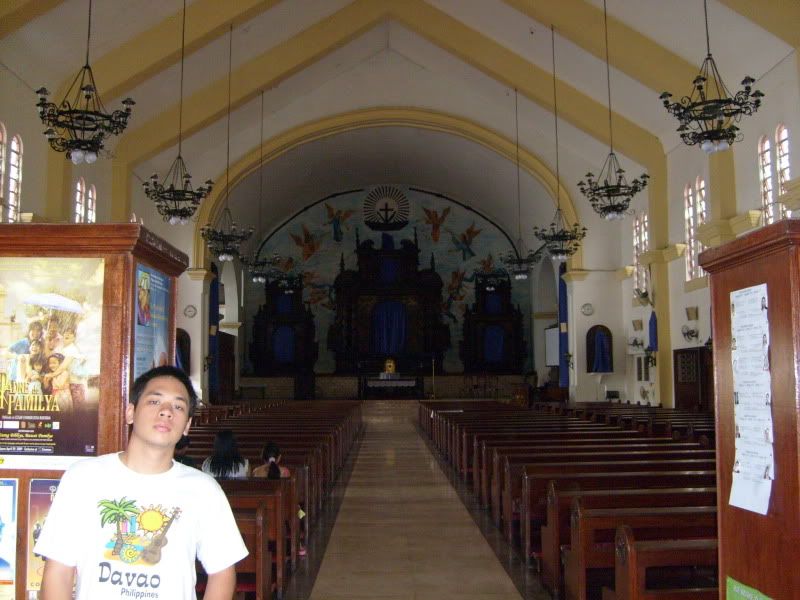 Junior stands inside the Franciscan church
Junior stands inside the Franciscan church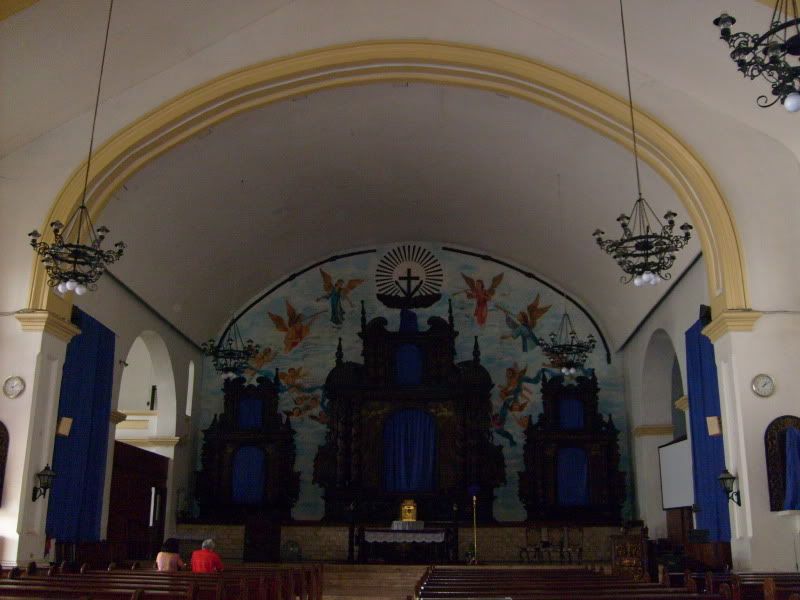 A closer view of the Baroque altar
A closer view of the Baroque altar This cave-like structure is said to be the prayer room of San Pedro Bautista
This cave-like structure is said to be the prayer room of San Pedro Bautista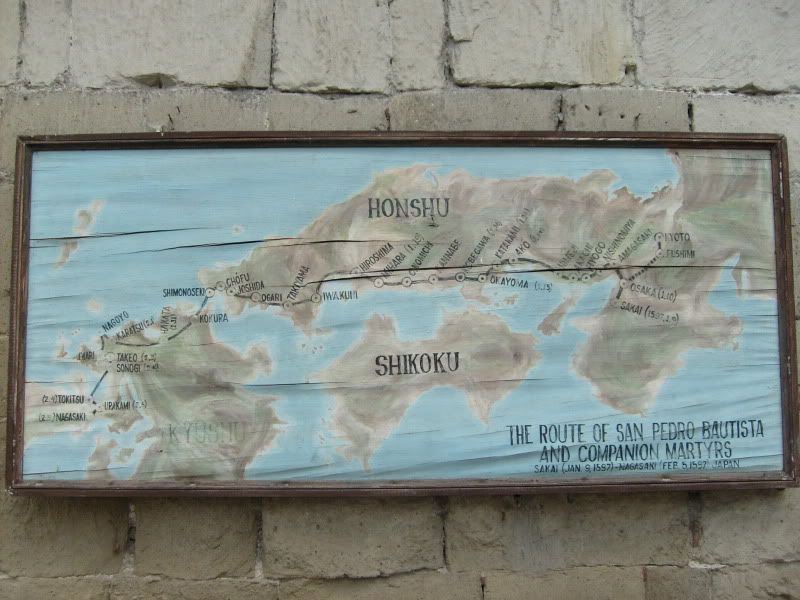 The map traces the route of San Pedro and his companion missionaries during their fateful journey across Japan which ended in their martyrdom at Nagasaki on February of 1597
The map traces the route of San Pedro and his companion missionaries during their fateful journey across Japan which ended in their martyrdom at Nagasaki on February of 1597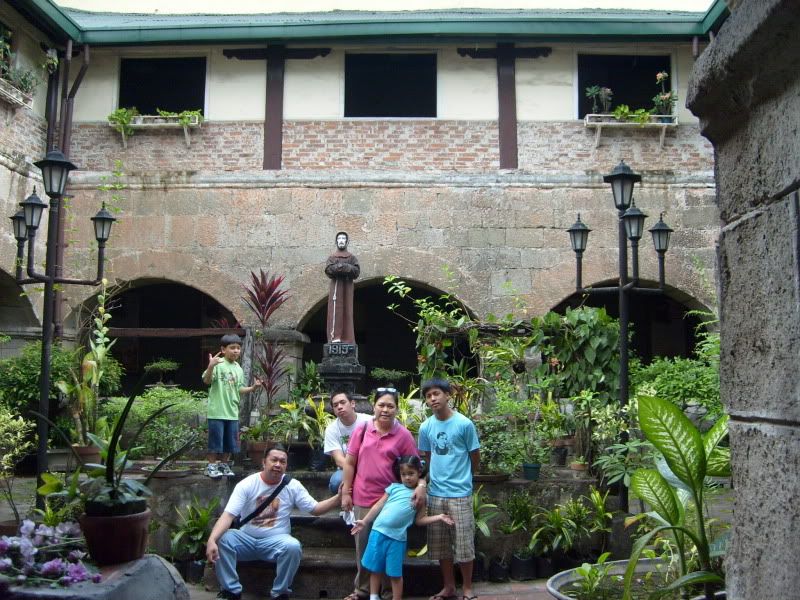 Family picture at the church’s garden courtyard
Family picture at the church’s garden courtyard The kids walk through the church’s rebuilt hallways
The kids walk through the church’s rebuilt hallways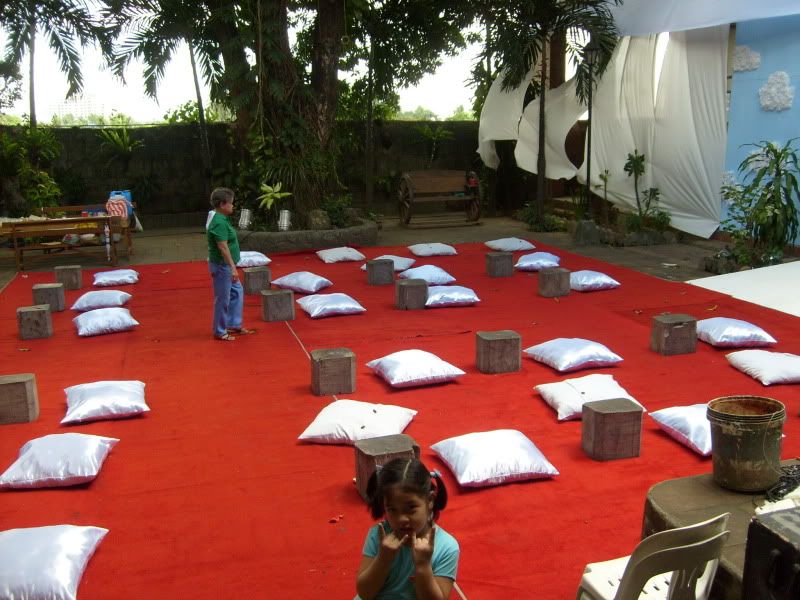 Another garden area is used for prayerful meditation
Another garden area is used for prayerful meditation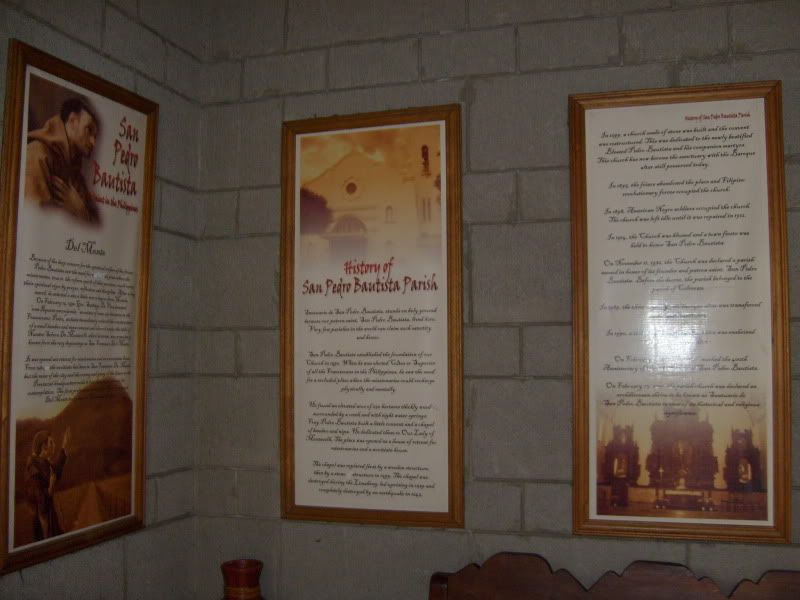 The frames narrate the story of the parish and of its saintly patron
The frames narrate the story of the parish and of its saintly patron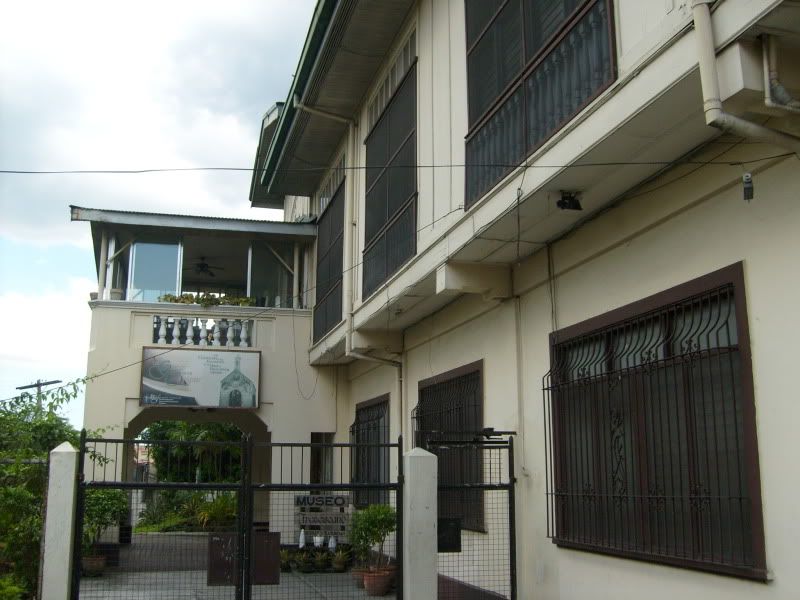
The Franciscans’ Museum nearby
 Next stop: Sto. Domingo Church along Quezon Avenue
Next stop: Sto. Domingo Church along Quezon AvenueIn the past, Santo Domingo Church would often be in our Holy Week itinerary either as part of the church visits or to hear the Siete Palabras (Reflections on Christ’s Seven Last Words).
 Home to the miraculous Our Lady of La Naval, the church was designated
Home to the miraculous Our Lady of La Naval, the church was designatedthe National Shrine of Our Lady of the Rosary in 1954
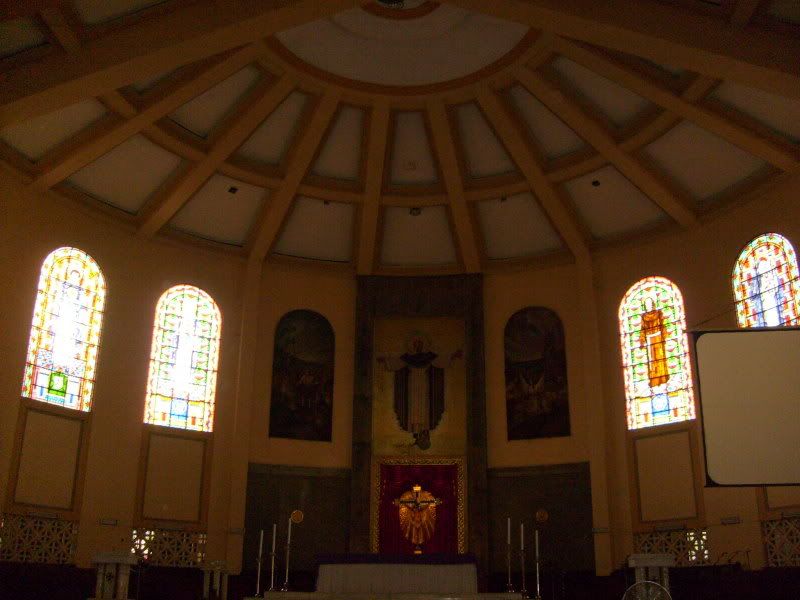
This is the church where Lovey and I made our marital vows way back in 1991
Later on in life, this church also became more memorable for me and my wife Odette, as we got married in this very church way back in January of 1991. Our celebrating priest of choice wasn’t a Dominican though but a fun-loving but active social worker and Jesuit cleric, Fr. Guido Arguelles.
We did however avail of the angelic singing talents of the parish based boys choir Tiples de Sto. Domingo to sing during our late afternoon wedding.
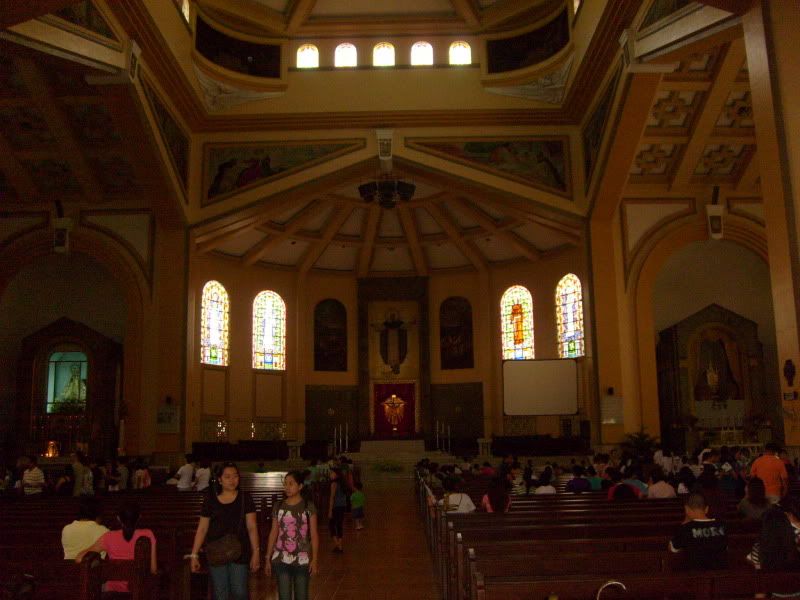
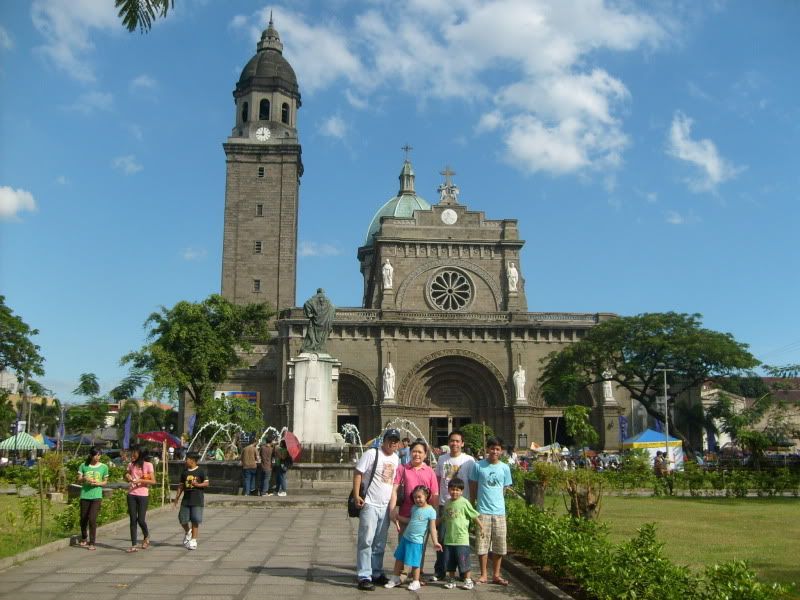 Bastion of Christianity in the Philippines - the Manila Cathedral is at the heart of the historic walled city of Intramuros
Bastion of Christianity in the Philippines - the Manila Cathedral is at the heart of the historic walled city of IntramurosAlso known as the Minor Basilica of the Immaculate Conception, the cathedral is the seat of the Archbishop of Manila. Like many old churches in the country, it has been damaged and destroyed several times (typhoon, fire, earthquakes, and World War II) since the first structure was first constructed in 1581. On its sixth rebirth, the present neo-Romanesque structure was completed in 1958.
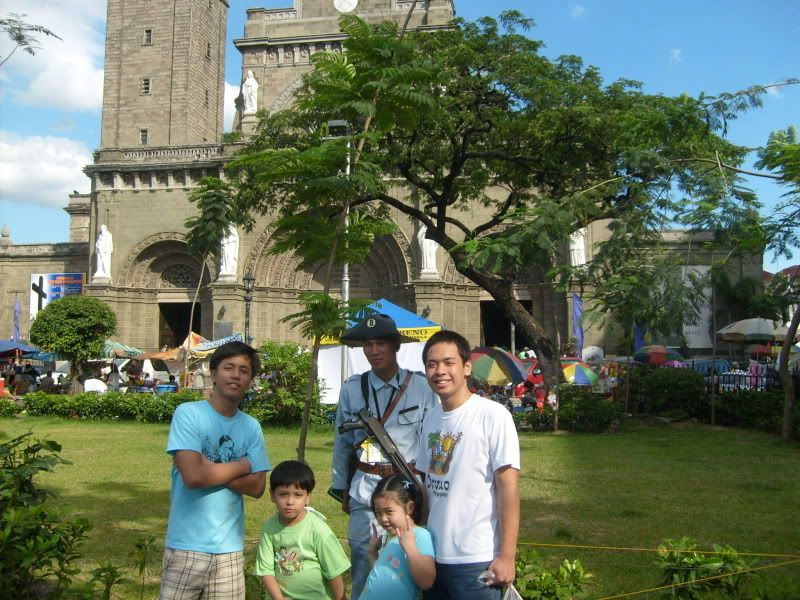 Intramuros’ guards with modern day firearms are dressed as turn of the (20th) century Katipuneros
Intramuros’ guards with modern day firearms are dressed as turn of the (20th) century Katipuneros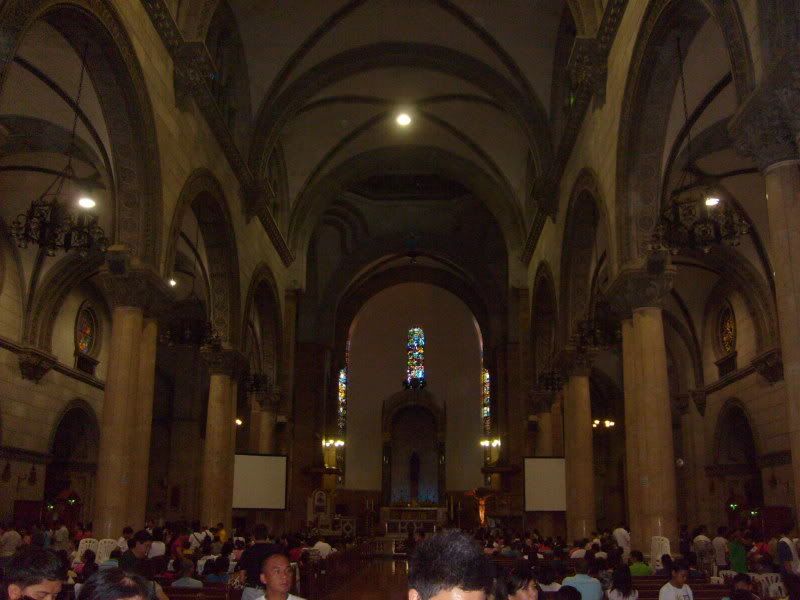 The Cathedral was filled with the faithful
The Cathedral was filled with the faithful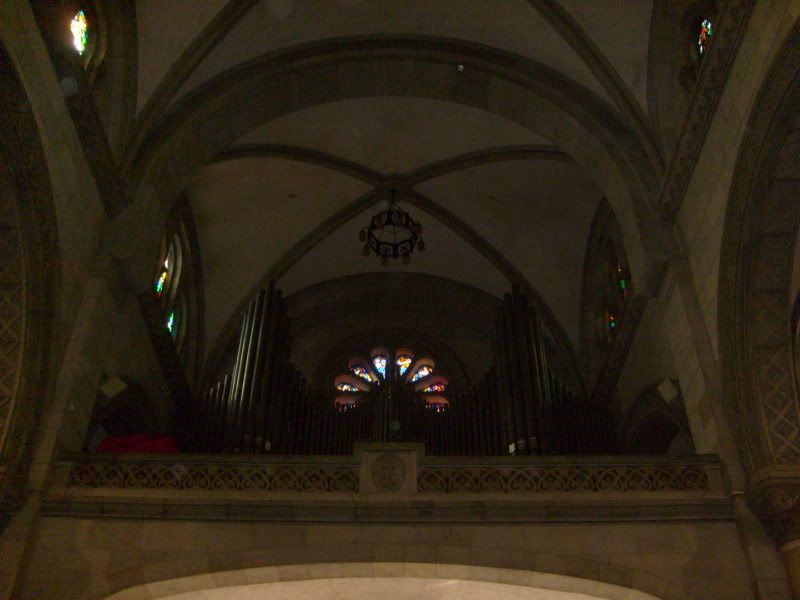
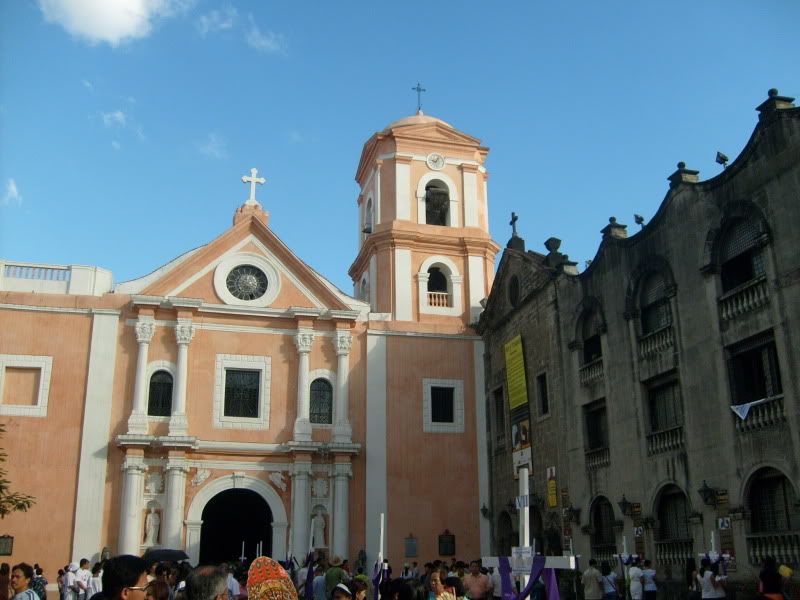 The Church of San Agustin and adjacent Museum
The Church of San Agustin and adjacent MuseumBuilt in 1587 and completed 1607, the San Agustin Church is the oldest stone church in the country. The architectural design of Juan Macias has survived many earthquakes since 1645 but was desecrated during the British occupation of Manila in 1762. The remains of the earliest Spanish conquistadores like Miguel Lopez de Legaspi, Salcedo and Lavezares and even of Blessed Pedro de Zuniga can still be found in the easternmost chapel of the church.
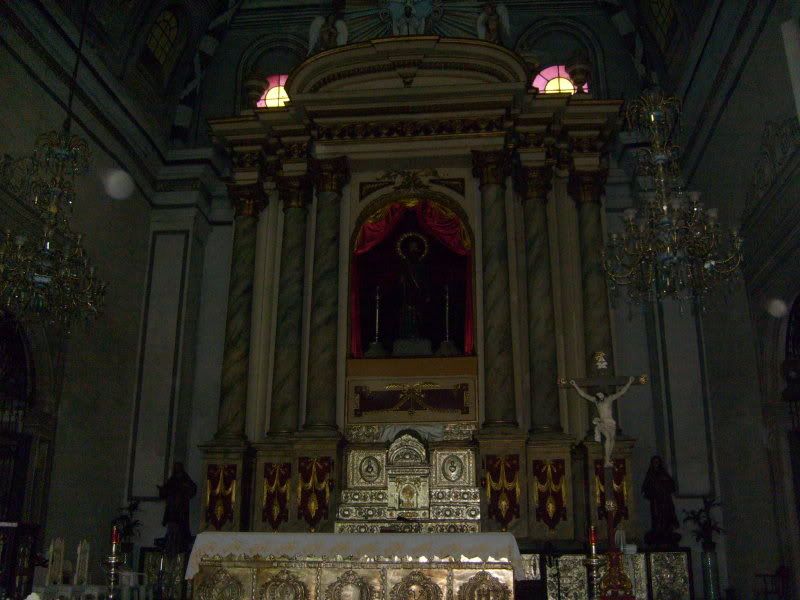
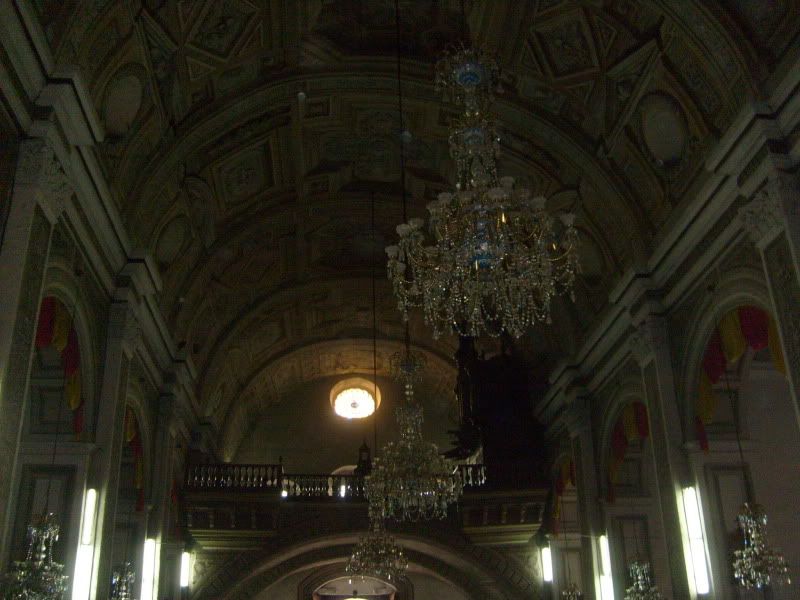
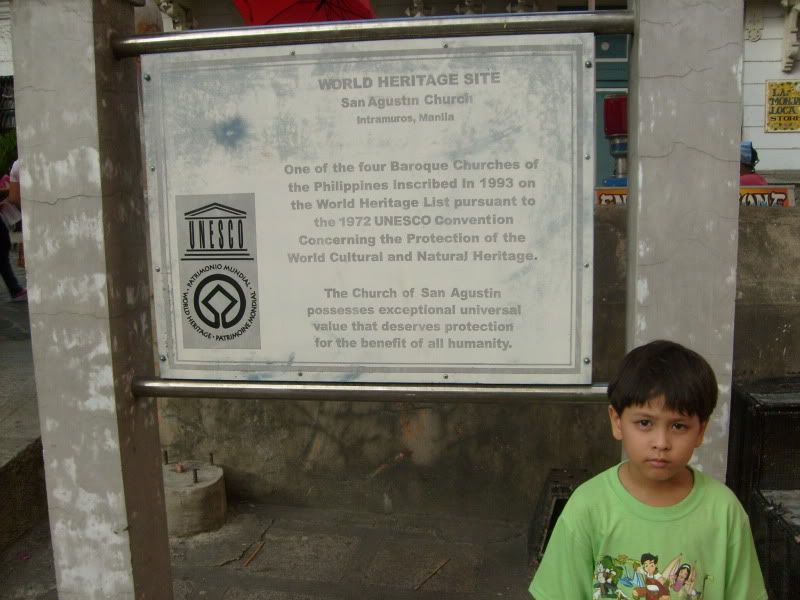

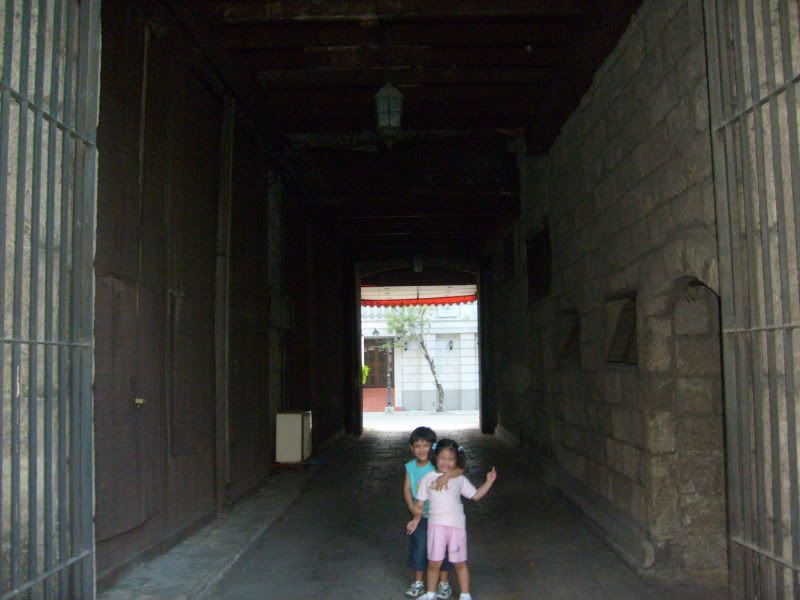 During the Spanish colonial times, this would have been where the horse-drawn ‘calesas’ would have passed to the homes or establishments on the other side of the street
During the Spanish colonial times, this would have been where the horse-drawn ‘calesas’ would have passed to the homes or establishments on the other side of the street A serene walkway beside the restaurant
A serene walkway beside the restaurant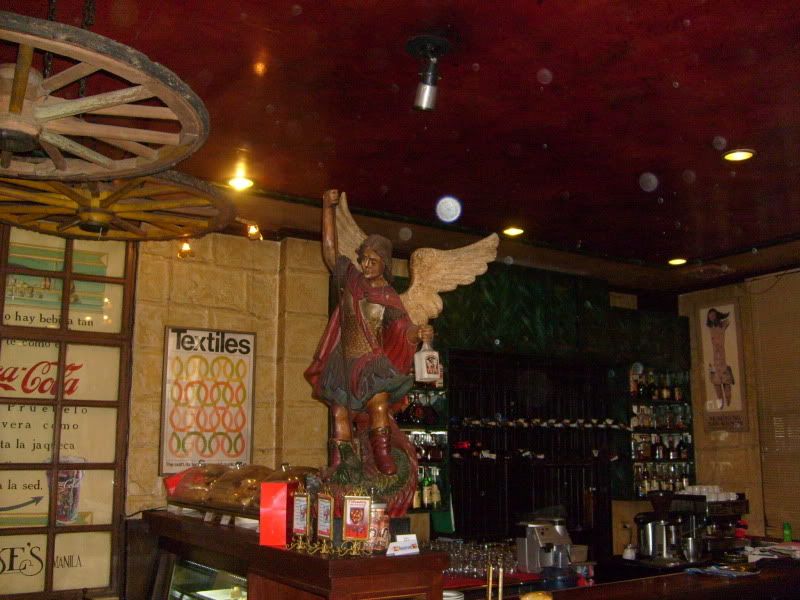 A statue of St. Michael the Archangel welcomes customers inside
A statue of St. Michael the Archangel welcomes customers inside A stone’s throw away from historic General Luna St. (Calle Real del Palacio), inside the Amanecer Compound, Ilustrado Restaurant is a reassuring blast from the past. With its neo-classic motif, it combines the class and beauty of a time gone by with the amenities of our modern era. Anyone who has the resources for any important occasion or gathering in their lives like an anniversary or wedding should seriously consider such a captivating place.
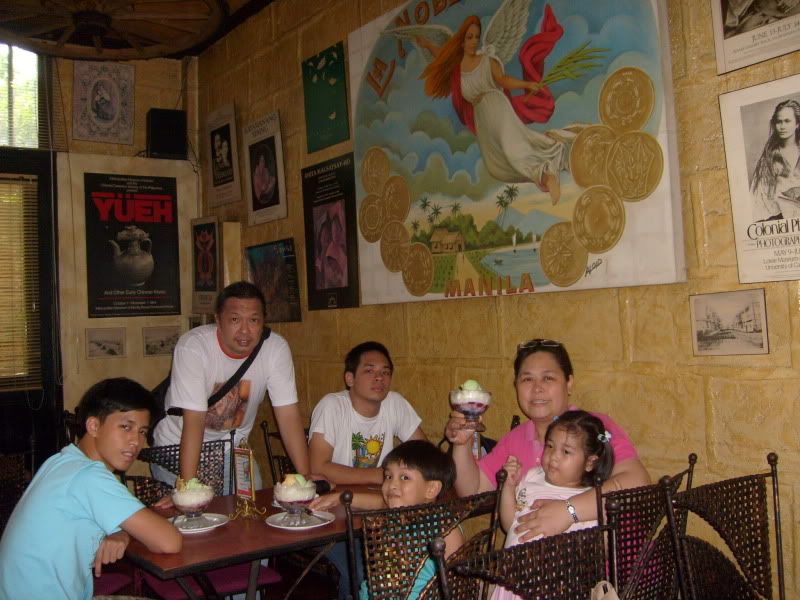 Nothing like cool ‘halo-halo’ on a hot mid-summer’s afternoon
Nothing like cool ‘halo-halo’ on a hot mid-summer’s afternoonLiterally meaning “mix-mix” - halo-halo is a popular dessert composed of shaved /crushed ice, sugar and evaporated milk with a generous mixture of a myriad of countless combination of ingredients which often include leche flan (custard), white kidney beans, red beans, tapioca (sago), jelly (gulaman), nata de coco, kaong, ube (purple yam), macapuno, banana, garbanzos (chickpeas), pinipig, nangka (jackfruit), etc. Special halo-halo like the ones we ordered were topped with scoops of ice cream.
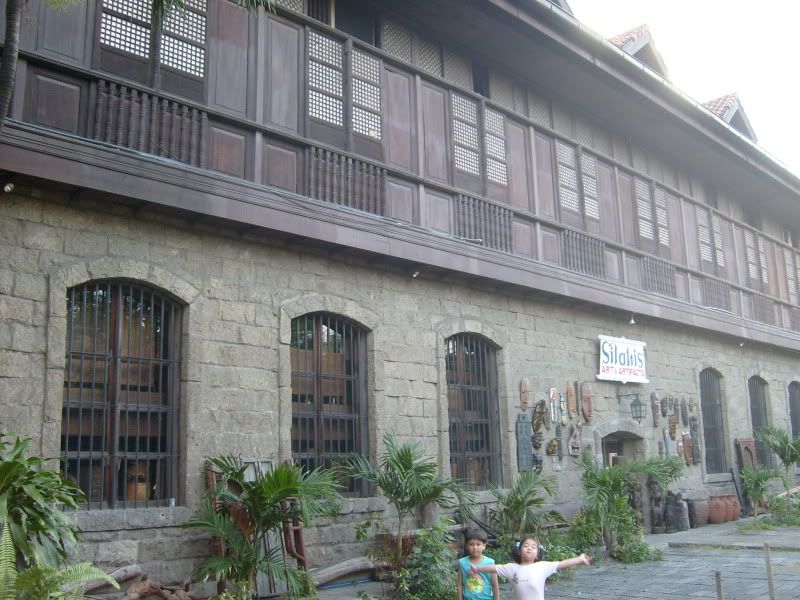 Like many reconstructed buildings in Intramuros, this building retained much of its original Spanish colonial architectural features -
Like many reconstructed buildings in Intramuros, this building retained much of its original Spanish colonial architectural features -ground floors made of stone with second floors made of wood
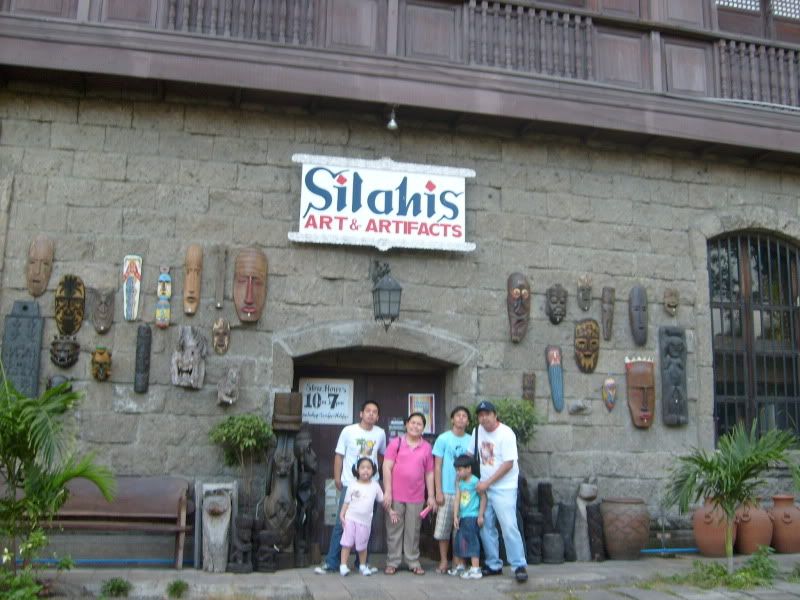
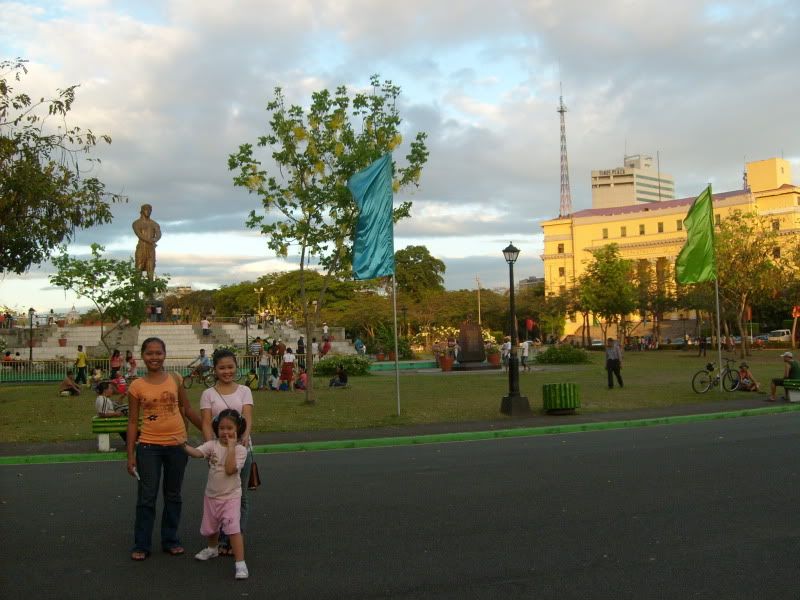 Faith and nannies May-may and Cha pose near the statue of Lapu-lapu
Faith and nannies May-may and Cha pose near the statue of Lapu-lapu(whom many recognize as the country’s first national hero) at the Luneta Park grounds
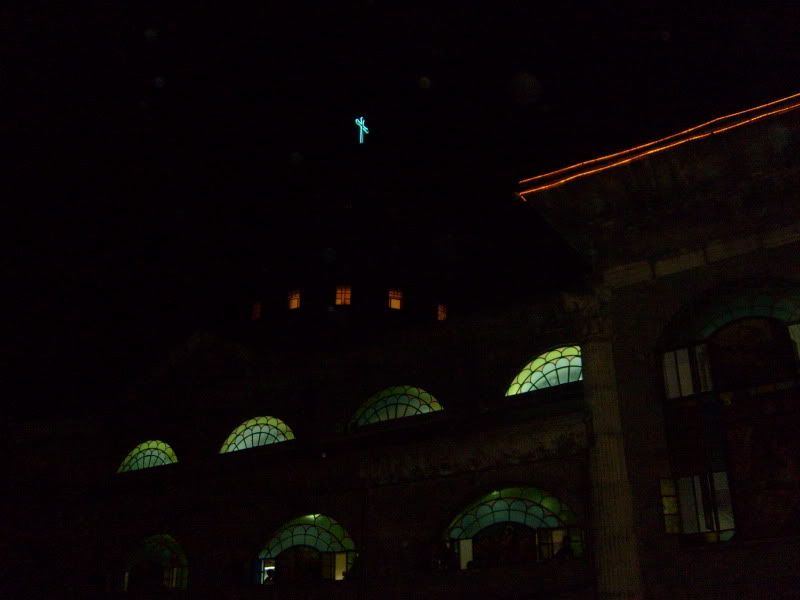 The cross at the top of the Vatican-inspired dome of St. Peter’s Church
The cross at the top of the Vatican-inspired dome of St. Peter’s Churchalong Commonwealth Ave shined brightly against the dark April evening sky
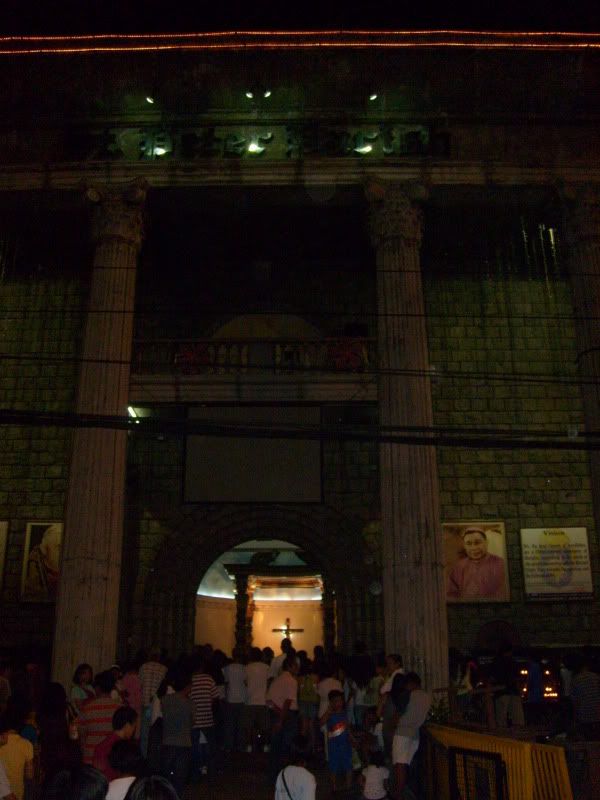 St. Peter’s Parish Church is also filled and overflowing with the faithful
St. Peter’s Parish Church is also filled and overflowing with the faithful Believers pray and lay vigil before the Tabernacle inside the Good Shepherd Parish
Believers pray and lay vigil before the Tabernacle inside the Good Shepherd ParishThere we found a pool of humanity in deep vigil as the tabernacle of the Holy Eucharist is displayed for veneration of the faithful.
It was a tiresome but fitting ending to a day of family bonding, discovery, rediscovery and communion with God. May every family decide to travel in a similar journey, a time for reflection to reconnect with your loved ones and a time to draw oneself closer to God.
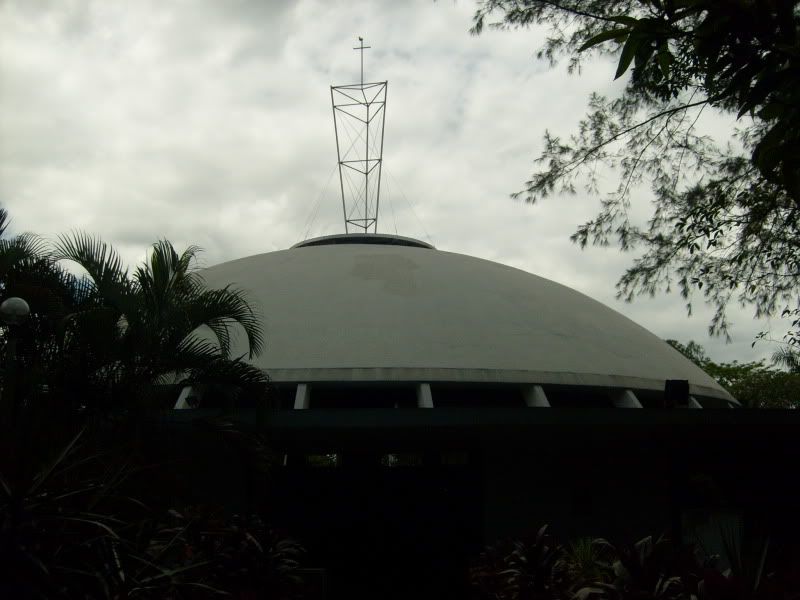


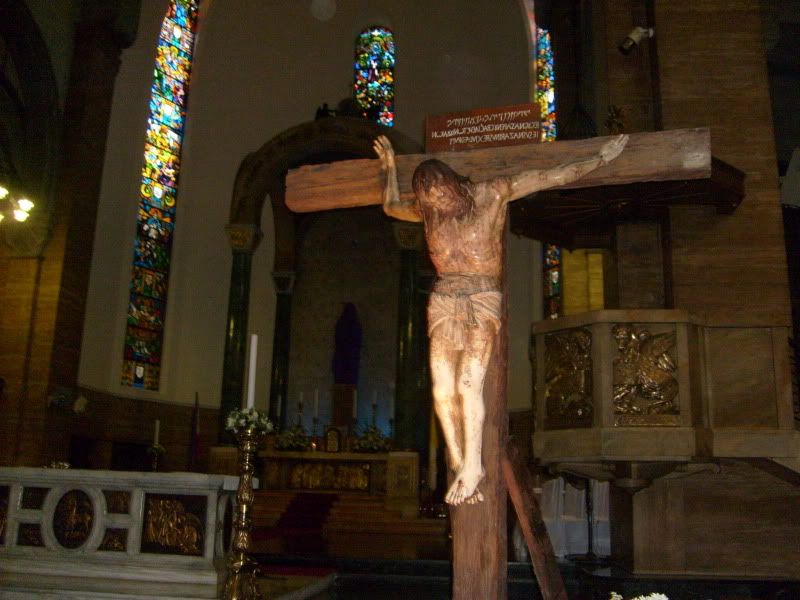
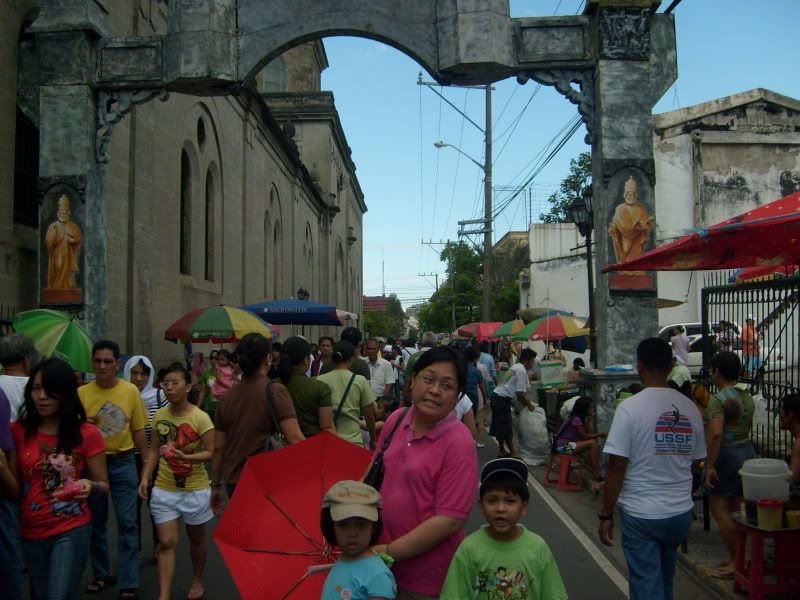
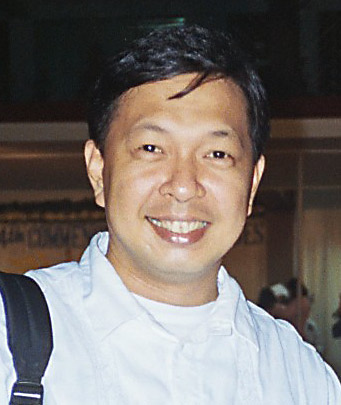
No comments:
Post a Comment